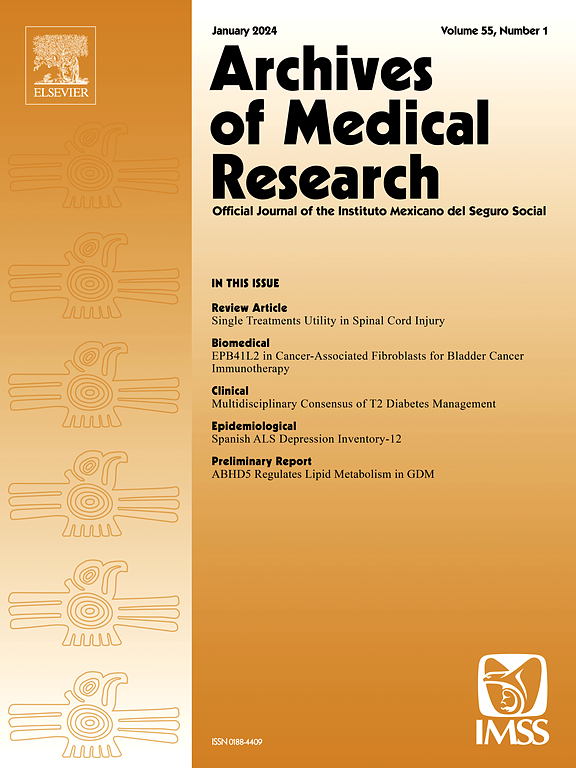Narrowing the Gap: Understanding Lung Cancer Care Intervals and Their Barriers in Latin American Low and Middle-Income Countries
IF 3.4
3区 医学
Q1 MEDICINE, RESEARCH & EXPERIMENTAL
引用次数: 0
Abstract
Background and Aims
Barriers in lung cancer (LC) management impact patient care and their outcomes, yet studies from high-income countries may not be fully applicable to low- and middle-income countries (LMICs) with distinct healthcare challenges. This study aims to characterize LC care intervals and their barriers in a Latin American LMIC.
Methods
This analysis of patients with LC diagnosed between 2003 and 2016 at a national cancer referral center, calculated the duration of the following six intervals: from symptom onset to first specialist visit (StFS), first specialist visit to diagnosis (FStDX), diagnosis to treatment initiation (DXtTX), symptom onset to diagnosis (StDX), first specialist visit to treatment (FStTX), and symptom onset to treatment (StTX). Clinicopathological and sociodemographic characteristics were extracted from electronic medical records. Multivariate Cox regression was used to identify factors associated with the duration of each care interval.
Results
503 patients were included; the majority were females (52.7%), with adenocarcinoma (76%) and a positive smoking status (56%). The median duration in days (interquartile range [IQR]) of StFS, FStDX, DXtTX, StDX, FStTX, and StTX were 90 (142), 34 (63), 17 (25), 148 (149), 60 (79), and 173 (153), respectively. In multivariate analyses, factors associated with the length of care intervals were sex, marital status, disease stage, mutational status, asbestos, and wood smoke exposure. After adjustment, sex remained a statistically significant predictor of longer intervals.
Conclusion
Our findings support the identification of barriers and the development of interventions aimed at shortening LC care intervals, particularly among disadvantaged individuals who are more likely to experience delays.
缩小差距:了解拉丁美洲低收入和中等收入国家的肺癌护理间隔及其障碍。
背景和目的:肺癌(LC)管理的障碍影响患者护理及其结果,然而来自高收入国家的研究可能并不完全适用于具有不同医疗保健挑战的低收入和中等收入国家(LMICs)。本研究旨在描述拉丁美洲低收入国家的LC护理间隔及其障碍。方法:对2003 - 2016年在国家癌症转诊中心诊断为LC的患者进行分析,计算以下6个间隔时间:从症状出现到首次专家就诊(StFS)、首次专家就诊到诊断(FStDX)、诊断到开始治疗(DXtTX)、症状出现到诊断(StDX)、首次专家就诊到治疗(FStTX)、症状出现到治疗(StTX)。从电子病历中提取临床病理和社会人口学特征。使用多变量Cox回归来确定与每个护理间隔持续时间相关的因素。结果:纳入503例患者;大多数是女性(52.7%),有腺癌(76%)和阳性吸烟状况(56%)。StFS、FStDX、DXtTX、StDX、FStTX、StTX的中位持续时间(四分位间距[IQR])分别为90(142)、34(63)、17(25)、148(149)、60(79)、173(153)。在多变量分析中,与护理间隔时间相关的因素有性别、婚姻状况、疾病分期、突变状态、石棉和木材烟雾暴露。调整后,性别仍然是统计上显著的预测更长的间隔。结论:我们的研究结果支持识别障碍和开发旨在缩短LC护理间隔的干预措施,特别是在更有可能经历延迟的弱势个体中。
本文章由计算机程序翻译,如有差异,请以英文原文为准。
求助全文
约1分钟内获得全文
求助全文
来源期刊

Archives of Medical Research
医学-医学:研究与实验
CiteScore
12.50
自引率
0.00%
发文量
84
审稿时长
28 days
期刊介绍:
Archives of Medical Research serves as a platform for publishing original peer-reviewed medical research, aiming to bridge gaps created by medical specialization. The journal covers three main categories - biomedical, clinical, and epidemiological contributions, along with review articles and preliminary communications. With an international scope, it presents the study of diseases from diverse perspectives, offering the medical community original investigations ranging from molecular biology to clinical epidemiology in a single publication.
 求助内容:
求助内容: 应助结果提醒方式:
应助结果提醒方式:


